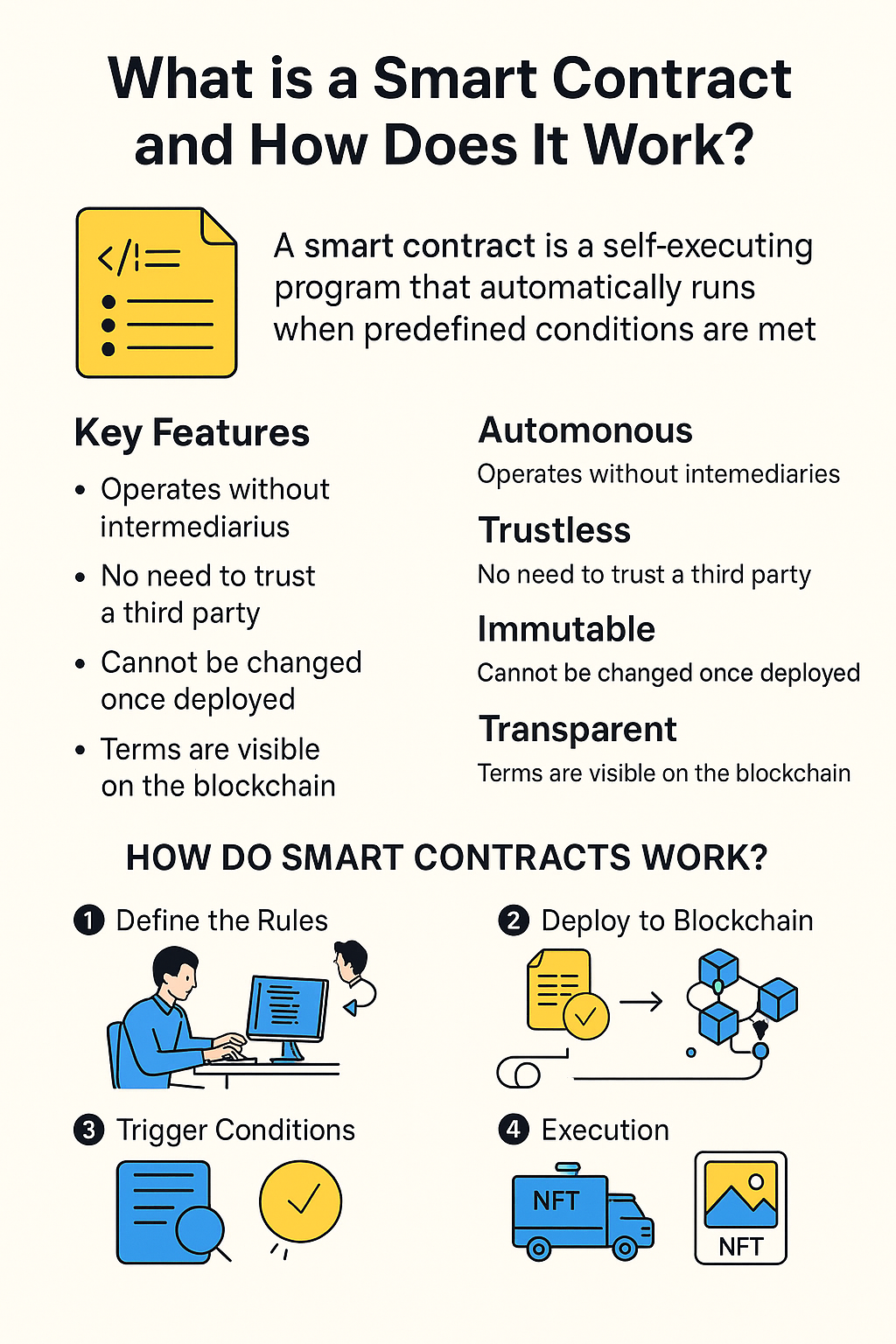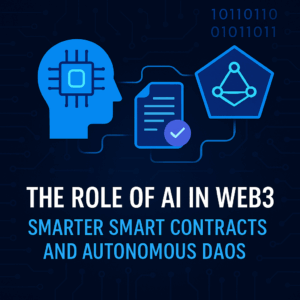What is a Smart Contract and How Does it Work?
What is a Smart Contract and How Does it Work?
The Code that Runs Trustless Transactions
In the world of blockchain, the term “smart contract” is often thrown around — especially in conversations about DeFi, NFTs, or Ethereum. But what exactly are smart contracts, and how do they work? Let’s simplify it.
1. What is a Smart Contract?
A smart contract is a self-executing program stored on the blockchain. It automatically runs when predefined conditions are met, without the need for intermediaries.
Think of it as a digital “if-this-then-that” agreement. For example:
If Alice sends 1 ETH to the smart contract, then Bob receives the file he paid for.
Everything is automated, transparent, and irreversible.
2. Key Features of Smart Contracts
- Autonomous: No third-party involvement once deployed.
- Trustless: Parties don’t need to trust each other — only the code.
- Immutable: Once on the blockchain, the contract cannot be altered.
- Transparent: All terms and actions are visible on the public ledger.
3. How Do Smart Contracts Work?
Here’s a step-by-step overview:
- Define the Rules: Developers write the contract in code (commonly using languages like Solidity for Ethereum).
- Deploy to Blockchain: The contract is uploaded to the blockchain where it lives permanently.
- Trigger Conditions: When certain conditions are met (like payment or a time delay), the contract executes the defined action automatically.
- Execution: The result (e.g., transfer of tokens, access to digital content) is carried out and recorded on the blockchain.
4. Real-World Use Cases
Smart contracts are revolutionizing many industries:
- Finance (DeFi): Automating lending, borrowing, and trading without banks.
- Insurance: Automatically issuing payouts when specific conditions are met (like flight delays).
- Supply Chain: Triggering payments when goods reach checkpoints.
- NFTs: Managing ownership and royalties for digital art and collectibles.
- Gaming: Enabling play-to-earn mechanics and secure in-game asset ownership.
5. Limitations to Consider
- Bugs in Code: Poorly written contracts can be exploited (e.g., DAO hack).
- No Reversals: If something goes wrong, it’s permanent.
- Cost: Executing contracts on-chain can incur gas fees.
That’s why thorough testing, audits, and smart design are essential.
Conclusion
Smart contracts are one of the most powerful innovations enabled by blockchain technology. By removing the need for intermediaries, they help create faster, cheaper, and more trustworthy digital transactions. As they continue to evolve, smart contracts are expected to shape the future of everything from banking to online games.
Unwind with Flutter Bees – The Stress-Free Mini Game
Learning about smart contracts can be intense — so why not take a few minutes to relax?
Try the Flutter Bees a fun and rewarding way to de-stress:
- Tap your way through the Clicker Game
- Protect your hive in the Bee Hive Defense Game
- Earn points by playing or just watching to complete missions
Whether you’re a blockchain beginner or a developer, a break with Flutter Bees can help reset your focus.
Would you like an image designed for this blog as well?






Post Comment